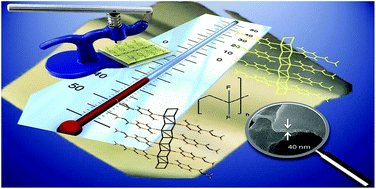Smart composite films of nanometric thickness based on copper–iodine coordination polymers. Toward sensors†‡
Abstract
One-pot reactions between CuI and methyl or methyl 2-amino-isonicotinate give rise to the formation of two coordination polymers (CPs) based on double zig–zag Cu2I2 chains. The presence of a NH2 group in the isonicotinate ligand produces different supramolecular interactions affecting the Cu–Cu distances and symmetry of the Cu2I2 chains. These structural variations significantly modulate their physical properties. Thus, both CPs are semiconductors and also show reversible thermo/mechanoluminescence. X-ray diffraction studies carried out under different temperature and pressure conditions in combination with theoretical calculations have been used to rationalize the multi-stimuli-responsive properties. Importantly, a bottom-up procedure based on fast precipitation leads to nanofibers of both CPs. The dimensions of these nanofibres enable the preparation of thermo/mechanochromic film composites with polyvinylidene difluoride. These films are tens of nanometers in thickness while being centimeters in length, representing smaller thicknesses so far reported for thin-film composites. This nanomaterial integration of CPs could represent a source of alternative nanomaterials for opto-electronic device fabrication.



 Please wait while we load your content...
Please wait while we load your content...